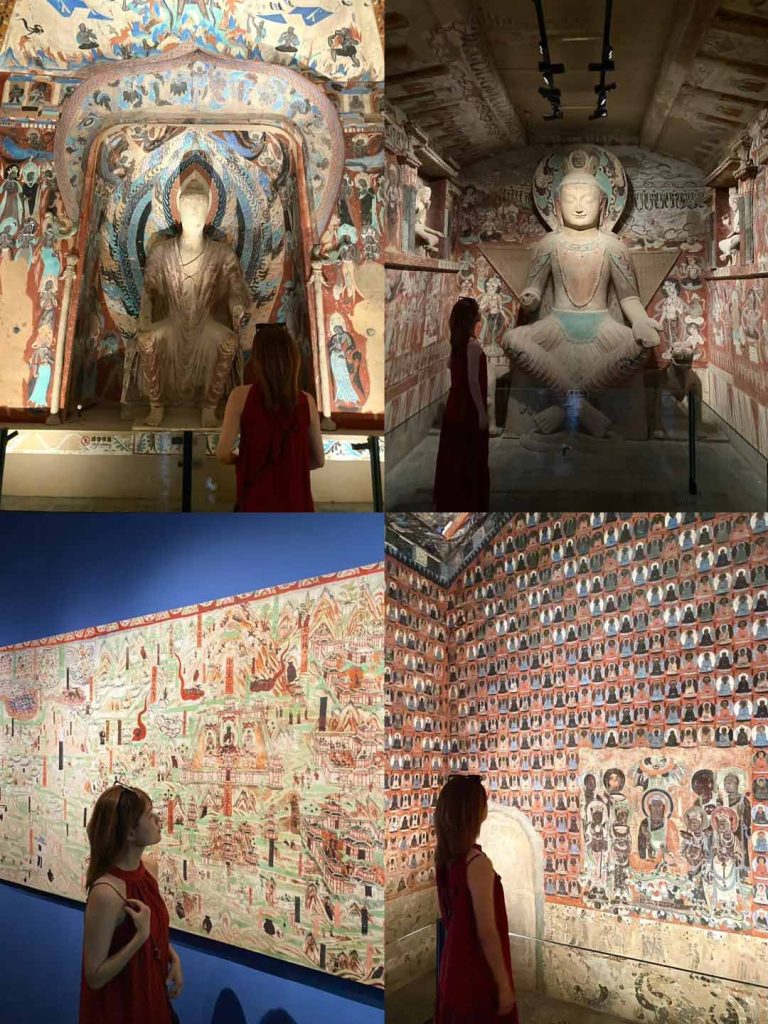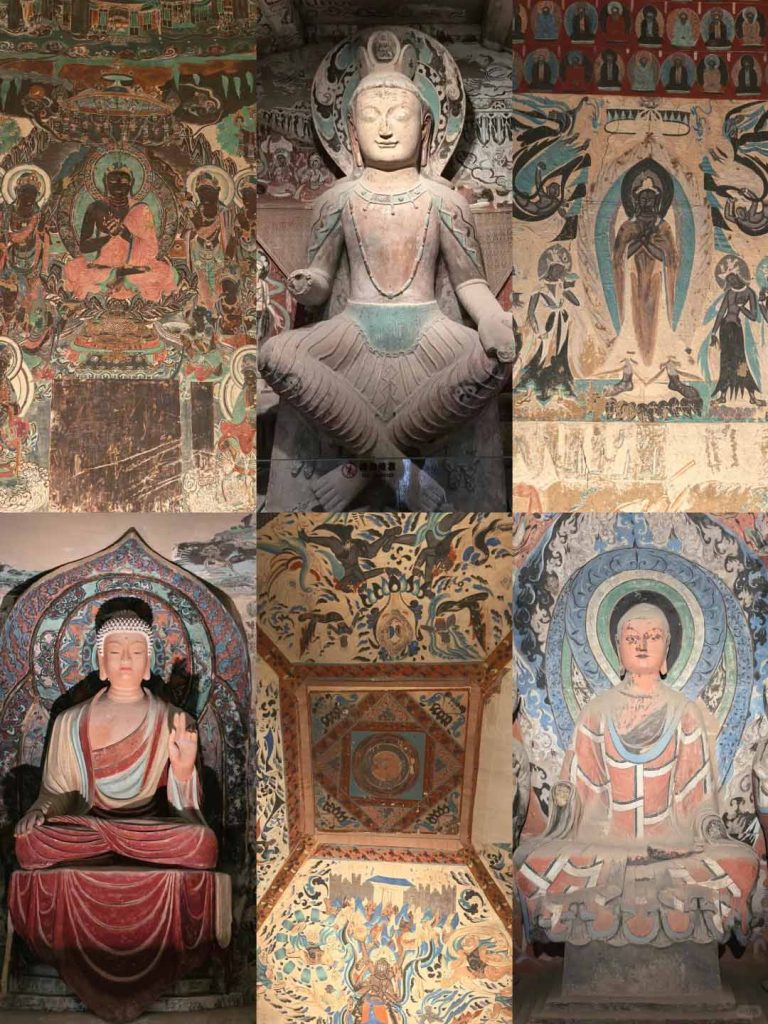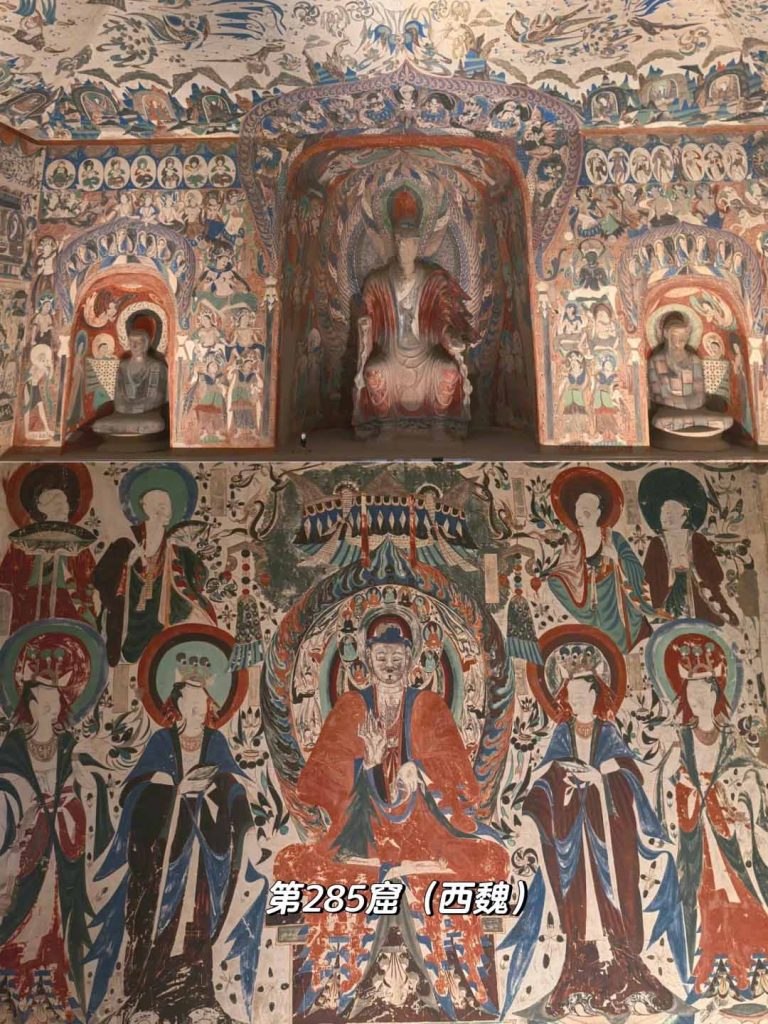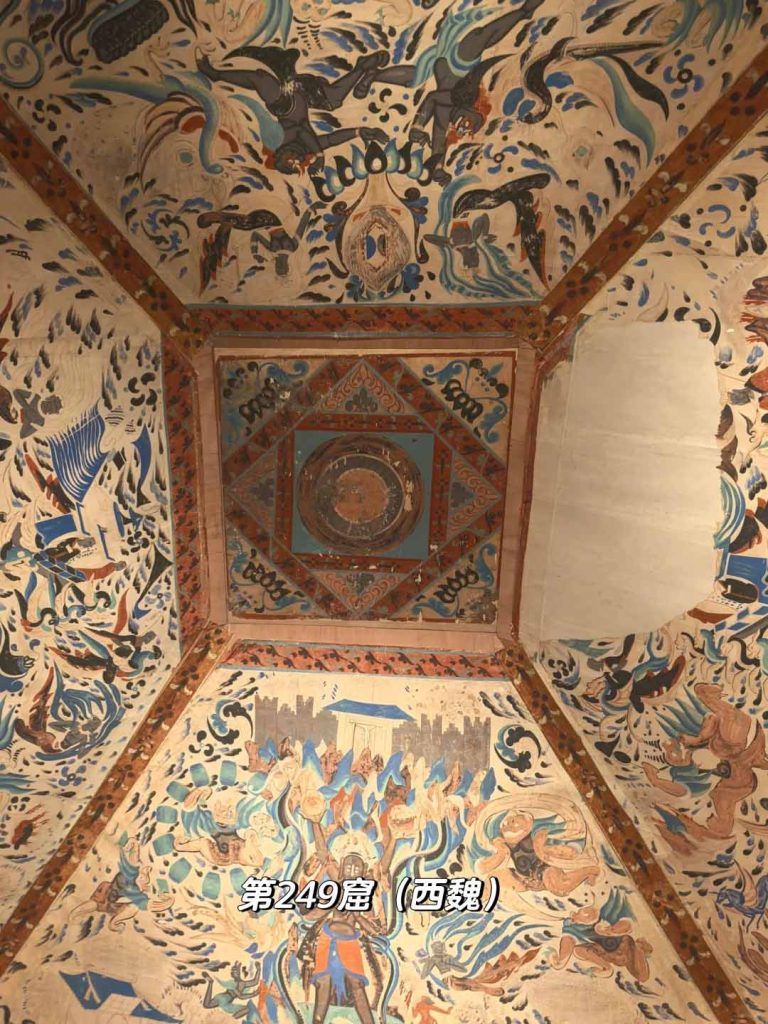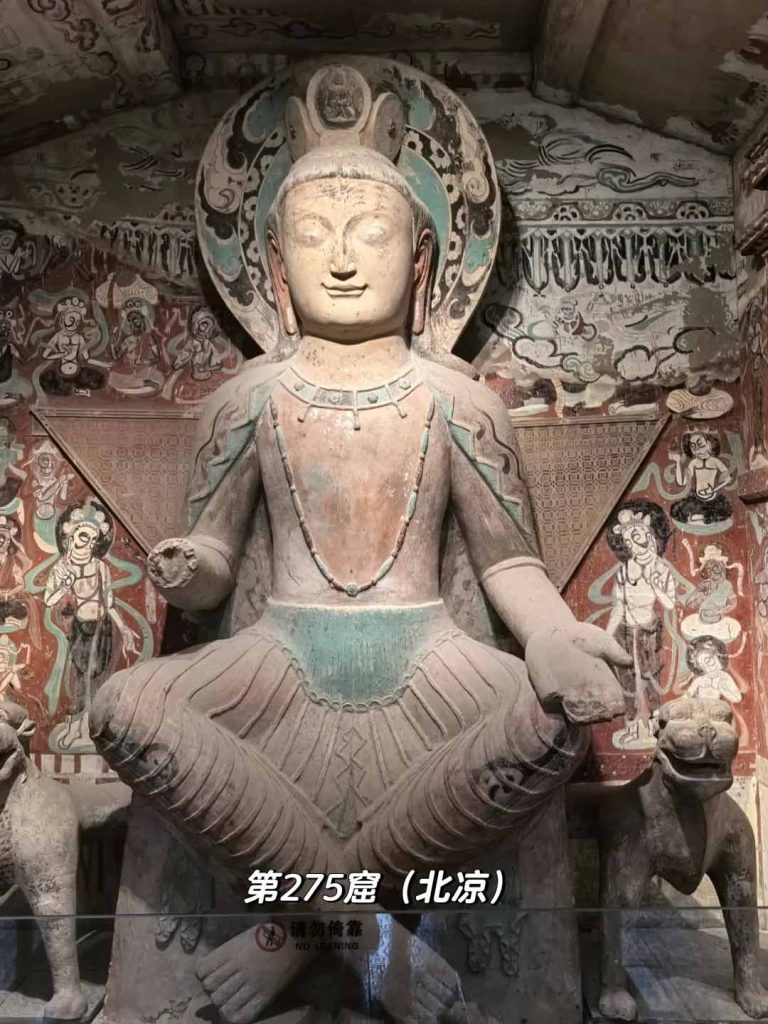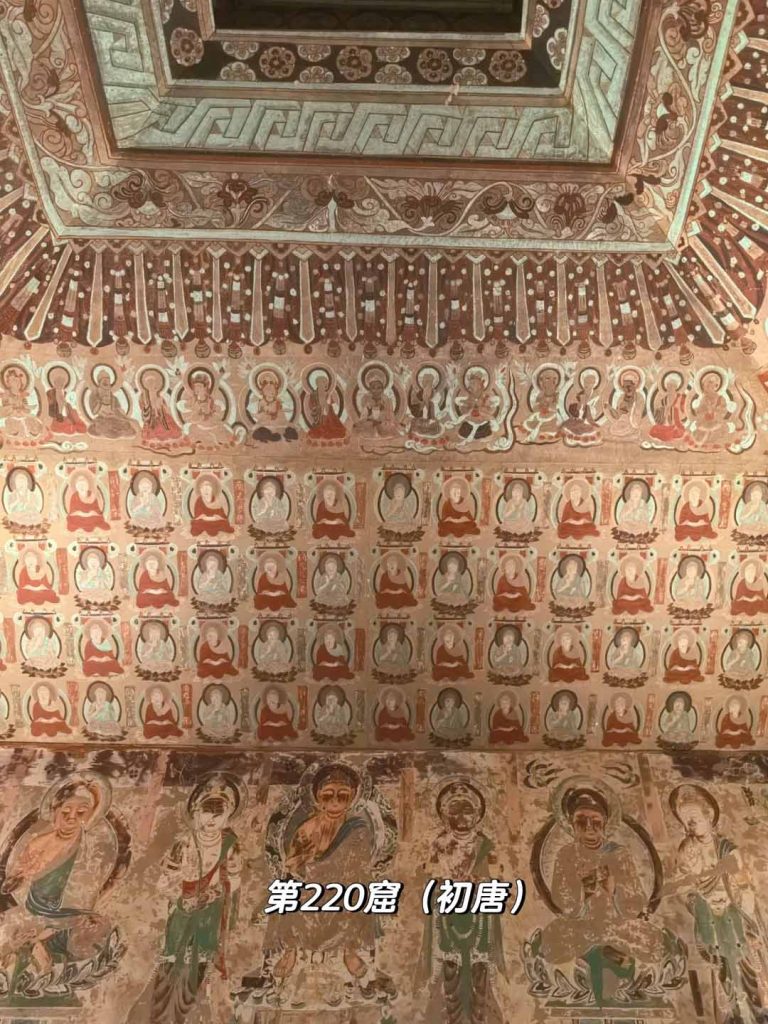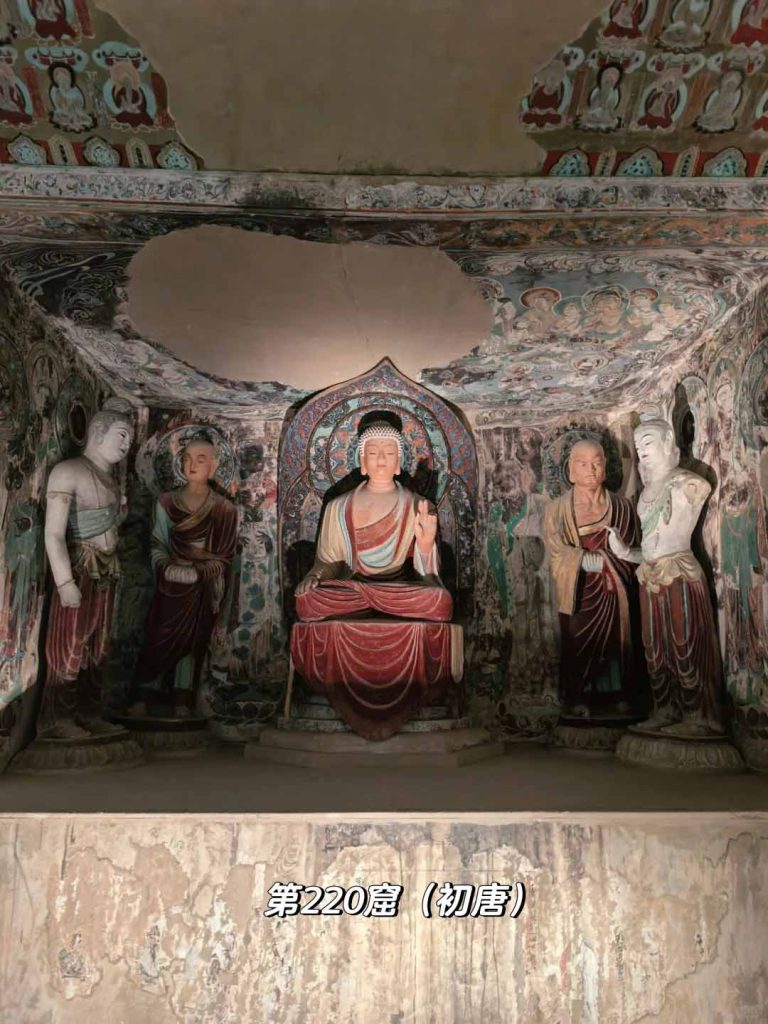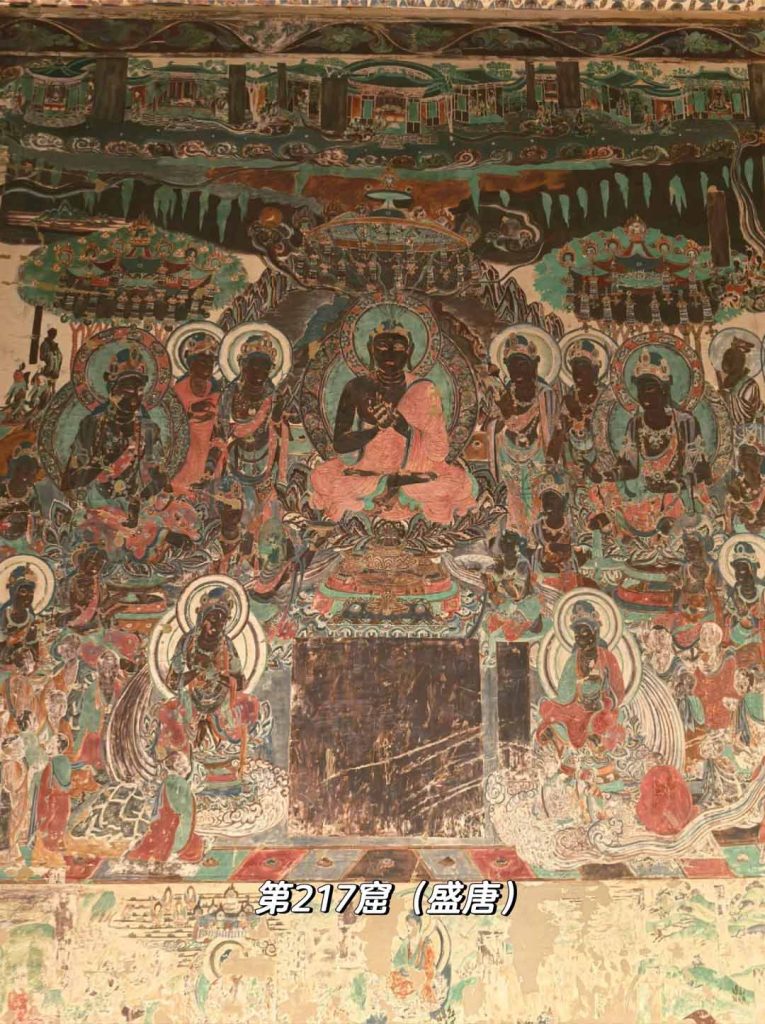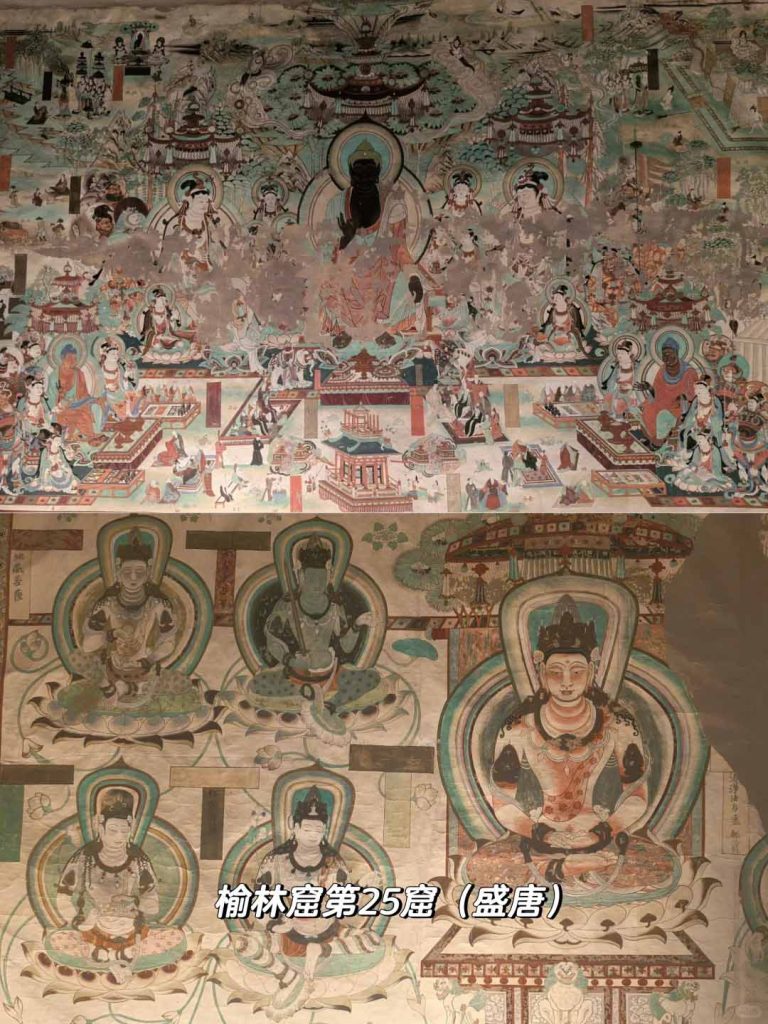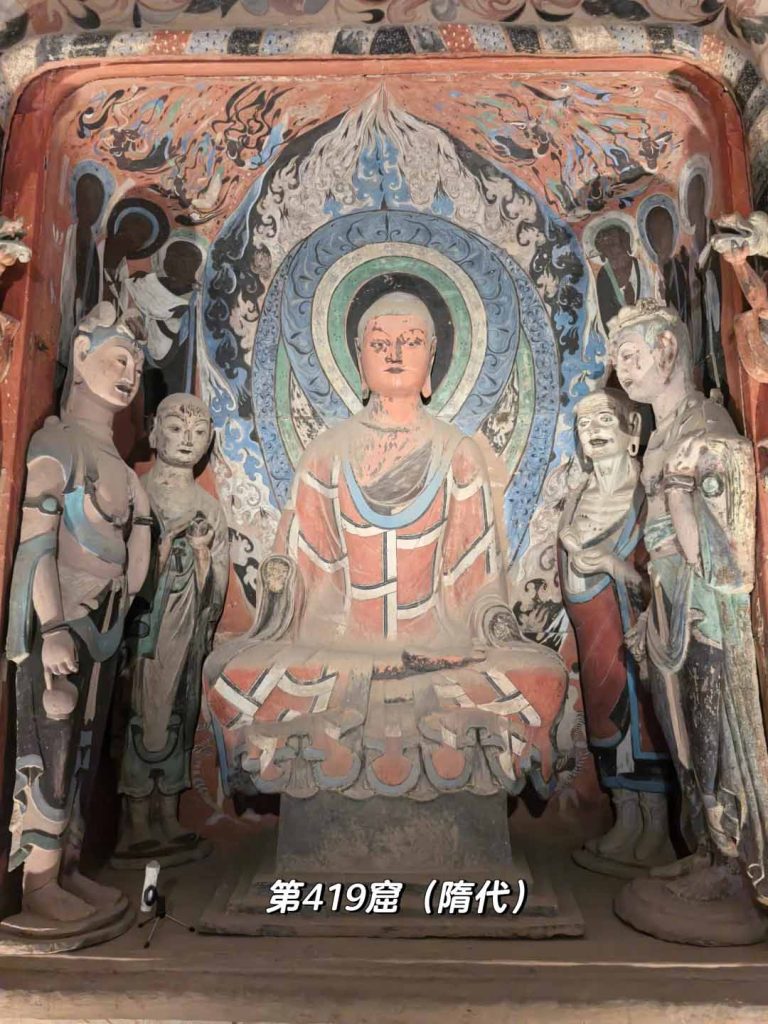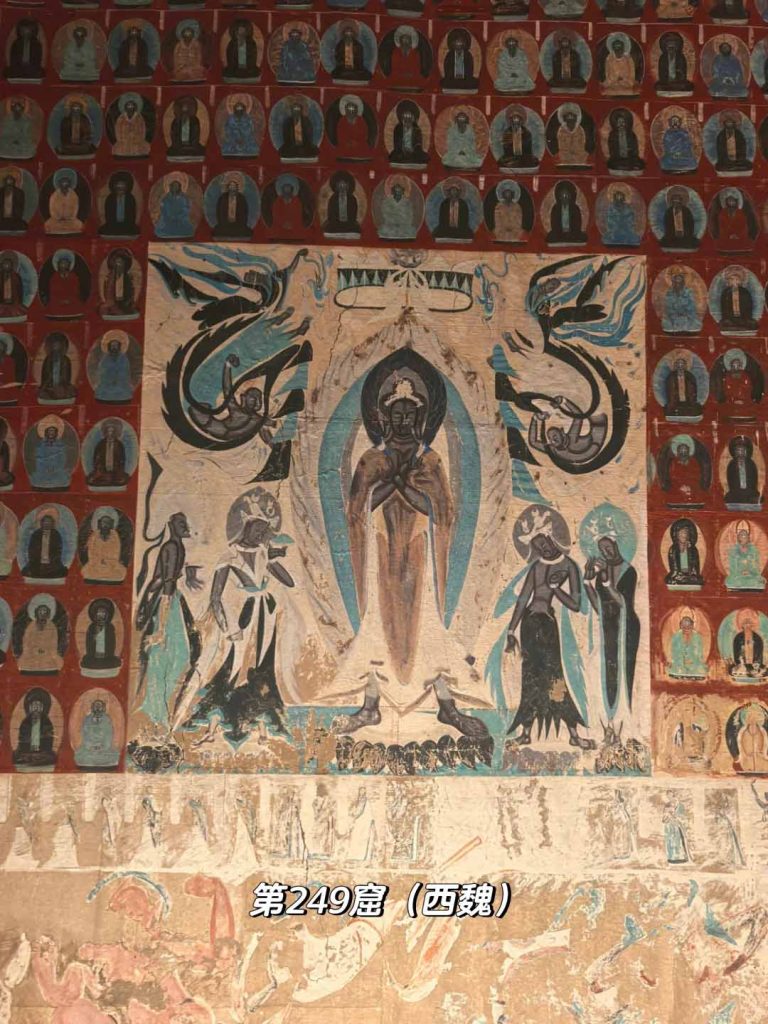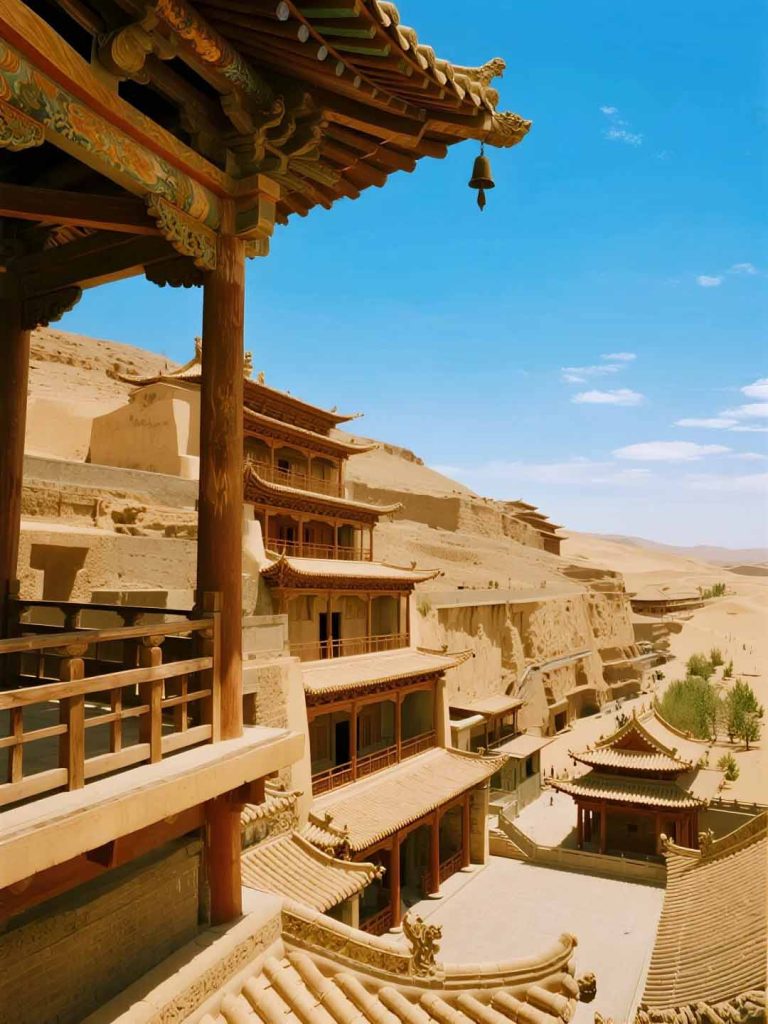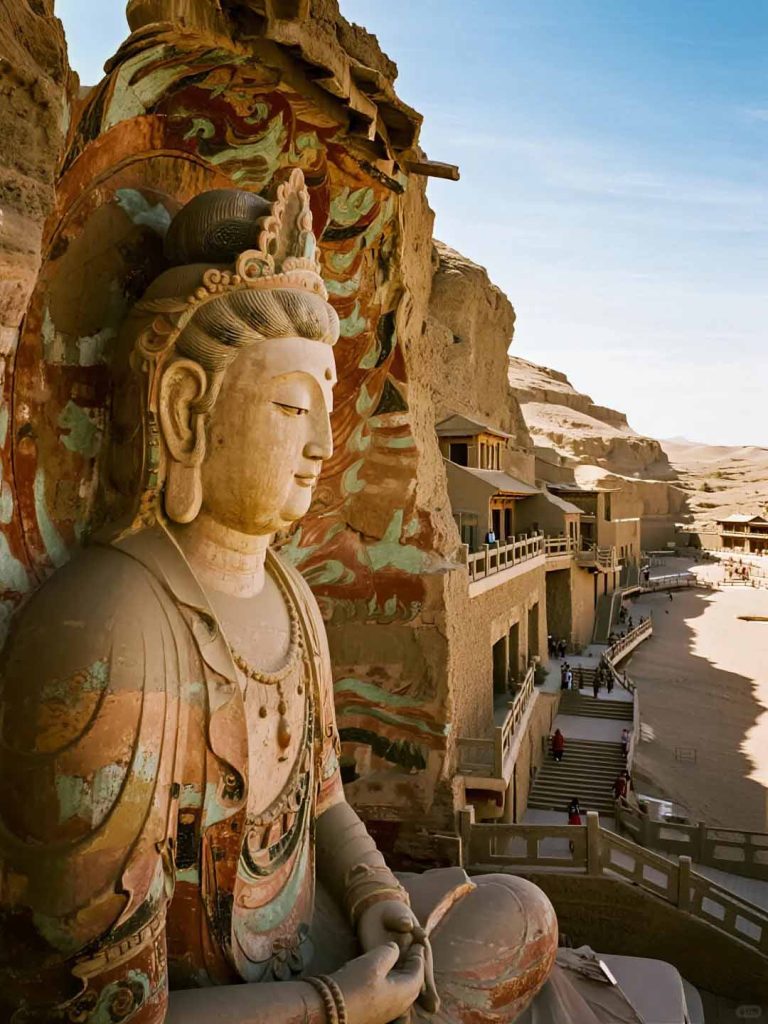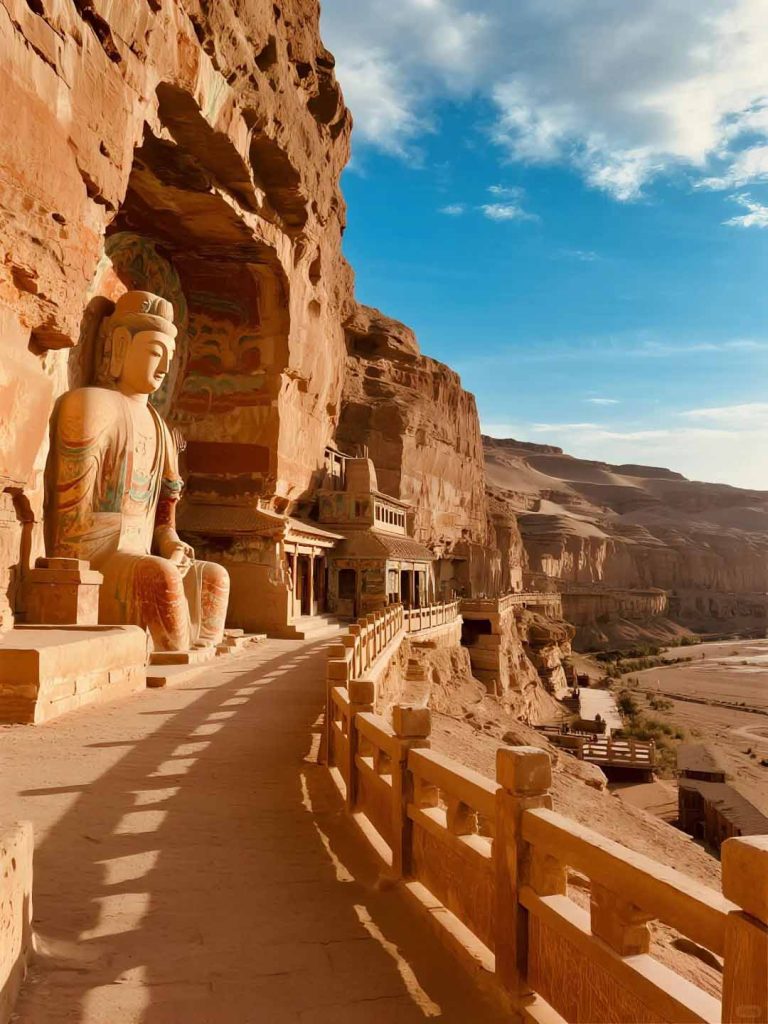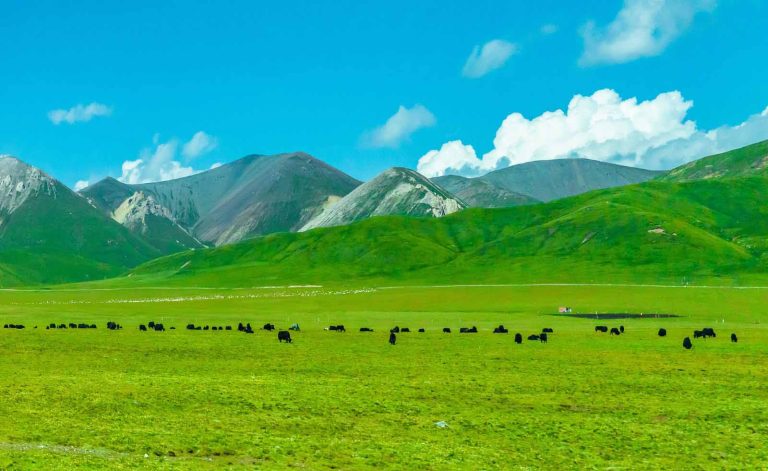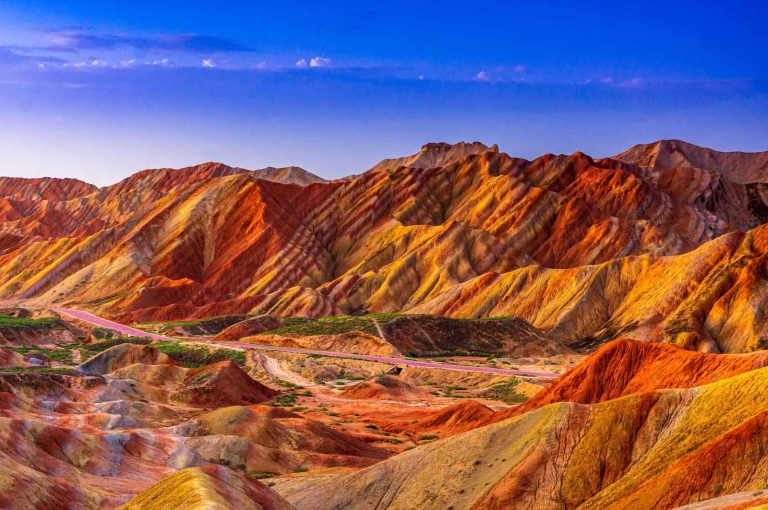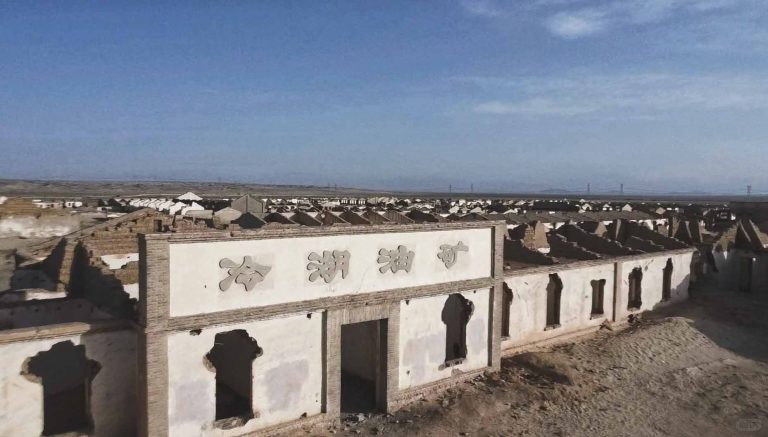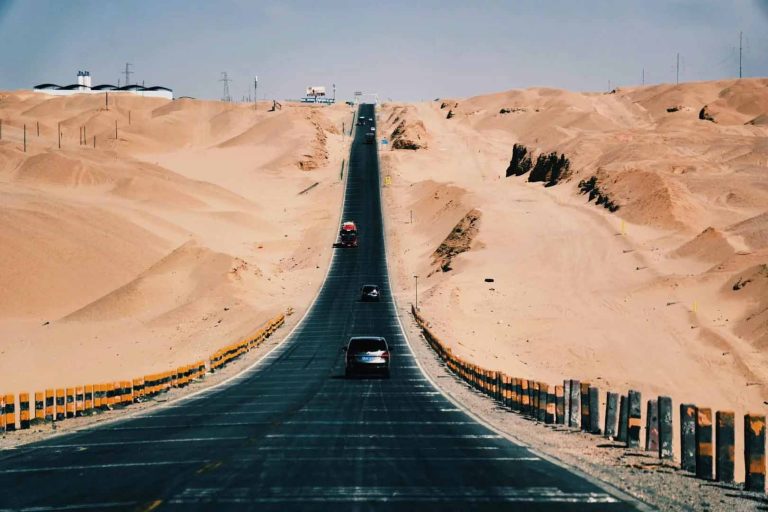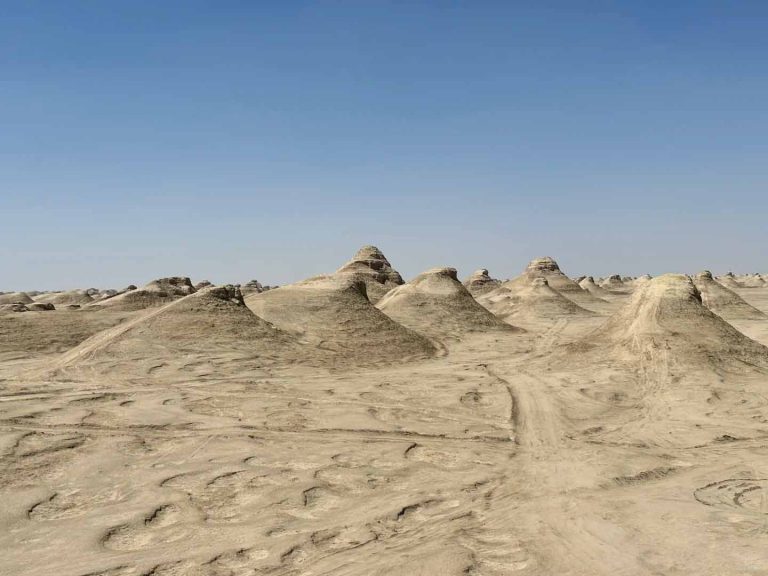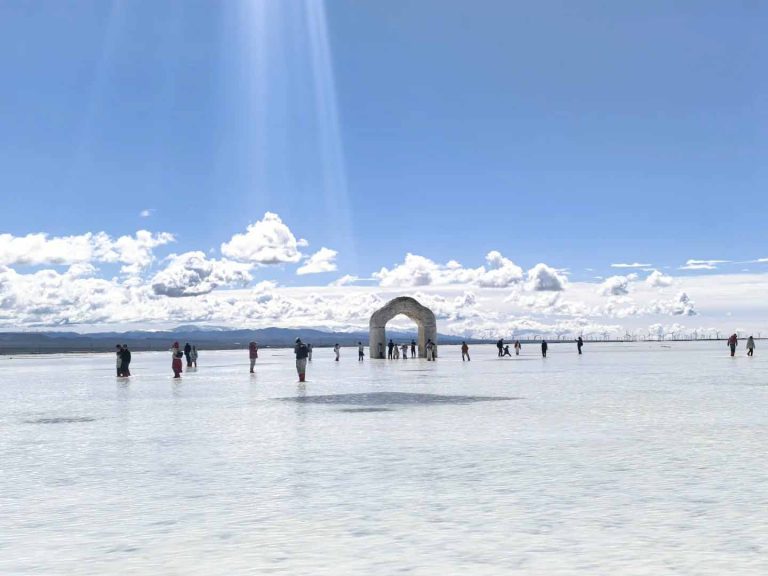address
Yangguan Avenue, Dunhuang City, Jiuquan City, Gansu Province
Opening hours
The park is open; open from 08:00-18:00 (ticket sales stop at 15:30, admission stop at 16:10)
Official phone number
Ticketing consultation: 0400-8333715
Nestled on the eastern slopes of the Mingsha Mountains, southeast of Dunhuang City at the western end of the Hexi Corridor, lies a millennia-old Buddhist art treasure trove—the Dunhuang Mogao Caves. Founded in the second year of the Jianyuan era of the Former Qin Dynasty (366 AD), it underwent construction across more than ten dynasties, forming a massive complex of caves integrating architecture, colored sculptures, and murals. Preserved today are 735 caves, 2,415 colored sculptures, and 45,000 square meters of murals, earning it the title of “Pearl of Oriental Art.” In 1987, the Mogao Caves were inscribed on the UNESCO World Heritage List. Alongside the Yungang Grottoes in Shanxi and the Longmen Grottoes in Henan, they are collectively known as “China’s Three Great Grottoes.” Today, they stand as a global pilgrimage site for travelers seeking to explore Silk Road civilization and Buddhist art.
1. Core overview: An artistic epic that spans thousands of years
The excavation of the Mogao Caves began with the monk Yue Zun’s vision of “golden light like a Buddha.” Subsequently, construction continued uninterrupted for a thousand years through the Northern Dynasties, Sui, Tang, Five Dynasties, Song, Western Xia, and Yuan periods. Its artistic content centers on Buddhism, encompassing Buddha’s previous lives, karmic tales, and historical Buddhist paintings, while also incorporating scenes of social life from different eras. — From Tang dynasty court banquets and Western Region caravans to Song dynasty street scenes and farming landscapes, the caves function as a “library on walls,” vividly documenting China’s artistic, cultural, and social evolution from the 4th to the 14th century.
The caves, carved into the mountainside, are divided into southern and northern zones. The southern area served as a place for Buddhist worship and practice, where all extant caves are concentrated. The northern zone functioned as a monastic living area, with most surviving caves being meditation chambers or monks’ quarters, preserving a wealth of ancient documents and daily necessities. The artistic achievements of the Mogao Caves are concentrated in its murals and colored sculptures: the murals employ techniques such as “flat-painted heavy colors” and “gold-leaf overlay,” with colors remaining vivid and dazzling after a thousand years; The colored sculptures, primarily clay-based, range from the towering 35.5-meter-tall Tang Dynasty “Great Northern Buddha” to miniature figures just over a dozen centimeters tall. Each exhibits distinct forms and lifelike expressions, showcasing the sculptural styles of different eras. The “Dunhuang Manuscripts” (ancient texts unearthed from the Mogao Grottoes’ Library Cave) discovered in 1900 span religion, history, literature, and science, providing invaluable primary sources for studying Silk Road civilization.
2. Geographical location: cultural coordinates on the main road of the Silk Road
The Mogao Caves are located 25 kilometers southeast of Dunhuang City in Gansu Province, at geographical coordinates between 94°40′ and 94°41′ east longitude and 40°02′ and 40°03′ north latitude. Situated on the eastern foothills of the Singing Sand Mountains and the western cliffs of the Dangquan River, on the western bank of the Dangquan River. It lies approximately 25 kilometers east of Dunhuang city center and 30 kilometers west of the Mingsha Mountain-Crescent Lake scenic area. To the south, it borders the Qilian Mountains range, while to the north, it connects to the Dunhuang oasis. The site serves as the core starting point of the Dunhuang cultural tourism circuit (Mogao Caves – Mingsha Mountain – Crescent Lake – Yumen Pass – Yang Pass).
In terms of regional transportation, the scenic area is adjacent to National Highway 217 (Dunhuang-Yueya Highway), approximately 35 kilometers from Dunhuang Airport, 30 kilometers from Dunhuang Railway Station, and 28 kilometers from Dunhuang city center (the Reverse-Playing Pipa Statue). The surrounding transportation network is convenient. Traveling from downtown Dunhuang by car or scenic area shuttle takes about 40-50 minutes. It is an essential stop on both the Gansu-Qinghai Loop (Xining – Zhangye – Dunhuang) and the Northwest Loop (Lanzhou – Jiayuguan – Dunhuang).
3. Transportation guide: Easy to reach in multiple ways
(1) External arrival method
- Airplane travel:
- It can fly to Dunhuang Mogao International Airport (IATA Code: DNH). The airport is about 35 kilometers away from the scenic area. Routes to Beijing, Shanghai, Xi’an, Lanzhou, Urumqi, Chengdu and other cities have been opened. Flight time: About 1.5 hours from Lanzhou, about 2.5 hours from Xi’an, and about 2.5 hours from Beijing.The departure takes about 4.5 hours.
- Airport transportation: There is no direct taxi to the scenic area outside the airport. You need to take the airport bus (15 yuan /person, 30 minutes) to Dunhuang City (Shazhou Night Market station), and then transfer to the scenic area through train or take a taxi; You can also charter a car at the airport (5-seater car is about 150 yuan /car, which takes 50 minutes).) Direct access to scenic spots, suitable for multiple people traveling together.
- Train / high-speed rail travel:
- Dunhuang Railway Station is the main railway hub, about 30 kilometers away from the scenic area. At present, general-speed trains to Lanzhou, Xi’an, Urumqi and other cities have been opened. It takes about 12-14 hours from Lanzhou to Dunhuang and about 20 hours from Xi’an to Dunhuang. The Dunhuang branch of the Lanxin High-speed Railway has been planned for construction, and will achieve direct high-speed rail in the future.
- Station transportation: From the train station, you can take the direct shuttle bus “Train Station – Mogao Grottoes” (¥10 per person, 40 minutes) to the scenic area’s Digital Exhibition Center. Alternatively, take a taxi (approximately ¥80–100, 40 minutes) or opt for a shared ride (¥25–30 per person) for a more economical option.
- Travel by car:
- Recommended route: Starting from Dunhuang City, follow Yangguan Middle Road to Dunyue Highway (National Highway 217) and drive eastward. The whole journey is about 25 kilometers and takes 40 minutes. There are clear signs of “Mogao Grottoes” along the way. There is a large parking lot at the entrance of the scenic area (10 yuan per car, 20 yuan per bus).); Starting from Mingsha Mountain Crescent Spring Scenic Area, drive east along Dunyue Highway for about 30 kilometers, which takes 45 minutes to reach.
- Note: The scenic area implements a segmented tour mode of ‘digital display Center + physical cave’. You need to pick up your ticket at the digital display center (about 10 kilometers from the physical cave) by car, and then take the scenic ferry to the cave area. You cannot directly drive to the entrance of the cave by car.
- Through train to the city:
- There are a number of through train stops for Mogao Grottoes in Dunhuang city. The main stops include: the north gate of Shazhou Night Market (7:30-17:00, every 30 minutes), the entrance of Dunhuang Hotel (7:30-17:00, every 30 minutes), the fare is 10 yuan/person (round trip), direct to the scenic digital displayThe center is the most convenient and cost-effective way of transportation to Mogao Grottoes in the urban area. There is no need to worry about parking and route issues.
(2) Internal tour transportation
- Scenic ferry:
- The only mode of transportation connecting the “Digital Exhibition Center” and the “Physical Cave Area” is free of charge (included in the ticket). The whole journey is about 10 kilometers and takes 15 minutes. The operating time is synchronized with the ticket reservation time. It departs every 10 minutes. Visitors need to take a bus at the digital exhibition center with their tickets to arrive.After the cave area, the docent will lead you into the cave to visit.
- Walking tour:
- The tour of the physical cave area is mainly on foot. The docent will lead visitors along the designated route (about 1.5 kilometers), passing through representative caves of different eras. There are rest pavilions and cultural and creative shops along the way. The whole journey takes about 2 hours on foot. The tour route is gentle and there is no climbing section, which is suitable for all kinds of people.
4. Tickets and opening information: strict reservations and standardized tours
(1) Ticket price and reservation method
Tickets for Mogao Grottoes implement an ‘online real-name reservation system”. There is no on-site ticket window. Reservations need to be made through official channels in advance. Tickets are tight during the peak season (April to October). It is recommended to make an appointment 7-15 days in advance.
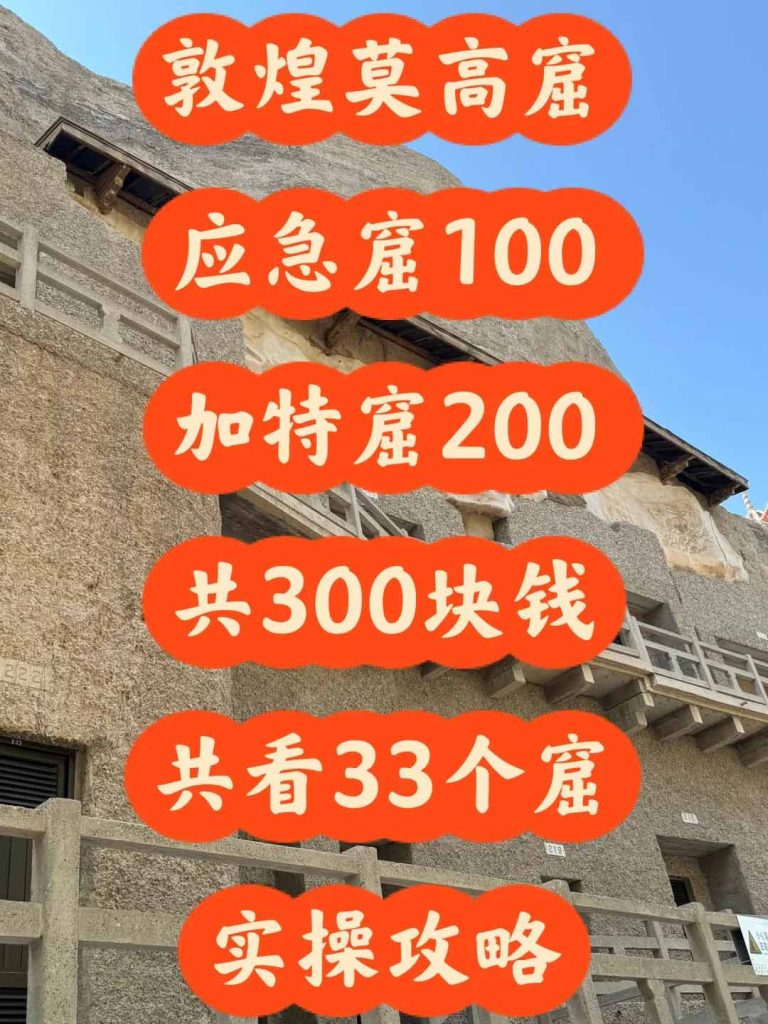
- Regular admission tickets (peak season April-October):
- Adult ticket 238 yuan /person (including digital exhibition center viewing + physical cave visit + ferry), the duration of the visit is about 3.5 hours (digital viewing 40 minutes + cave visit 2 hours + round-trip ferry 1 hour);
- Preferential ticket 148 yuan/person (minors aged 6-18, full-time students with bachelor’s degree or below, 60-69 years old, with valid documents);
- Ticket-free: children under 6 years old (inclusive) or under 1.2 meters tall (inclusive), the elderly over 70 years old (inclusive), the disabled, active-duty military personnel, and retired military personnel (with valid documents), ticket-free people still need to make an appointment online in advance for ‘ticket-free places”, and enter with the reservation code and certificate.garden.
- Regular admission tickets (November-March in the off-season):
- Adult tickets are 140 yuan/person and preferential tickets are 90 yuan /person. The ticket-free policy is consistent with the peak season. There are fewer tourists in the off-season and the difficulty of making an appointment is low. Some caves will be opened extra (not open during the peak season due to passenger flow restrictions).
- Emergency admission tickets (only open during peak season, such as May Day and National Day):
- Adult ticket is 100 yuan / person (only including physical cave visits + ferry, no digital viewing), the number of caves visited is small (about 4-5), and the opening hours are 12:00-16:00. You need to check the opening situation in real time on the official channels.
- Reservation channel: The only official reservation platform is the ‘Mogao Grottoes Visit Reservation Website‘ (official website) or the WeChat public account of the ‘Dunhuang Research Institute‘. When making an appointment, you need to fill in your personal information and select the date and time of the visit (divided into 8:00-10:00、10:00-12:00、12:00-14:00、14:00-16:00、16:00-18:00 Five time slots), after the reservation is successful, use the original ID card to pick up the ticket to enter the park.
(2) Opening hours and best time to visit
- Opening hours:peak season (April-October) 8:00-18:00(the last appointment period is 16:00-18:00, and admission will stop at 17:00); low season (November-March) 9:00-17:00 (the last appointment period is 14:00-16:00, 16:00 Stop entering the park); it may open 30 minutes in advance on May 1st and October 1st every year, subject to the official announcement for details.
- Best time to visit:
- Morning (8:00-12:00): The light is soft, there are fewer tourists, and the docent is in better condition. It is suitable for focusing on listening to the history and art of the cave to avoid the peak flow of people in the afternoon.;
- Off-season (November-March): There is a significant decrease in tourists, so you can enjoy the murals and colorful sculptures closer. Some “special caves” (precious caves that require additional fees) have a high probability of opening, which is suitable for in-depth cultural experience.
5. Must-visit attractions and featured experiences
(1) Core visiting areas and representative caves
- Digital Display Center (must experience):
- As the “first stop” for visiting Mogao Grottoes, the digital exhibition center uses the 8K ultra-high-definition movie ‘Millennium Mogao’ and the dome movie ‘Dream Buddha Palace’ to show the historical history and mural art essence of Mogao Grottoes in an immersive way, especially ‘Dream Buddha Palace’, which simulates multiple future worlds through dome technology.The precious caves that are open (such as Cave 320 and Cave 45) make up for the regret that some caves are not open during physical visits. The viewing experience is shocking and is an important foundation for understanding the art of Mogao Grottoes.
- The core highlights of the physical caves (guided by the docent, about 8-10 caves, depending on the appointment time and season, there are slight differences):
- Cave 96 (Beida Statue Cave): The tallest cave in Mogao Grottoes. There is a 35.5-meter-high seated statue of Maitreya Buddha in the Tang Dynasty. It is chiseled from the mountains and is magnificent. It is one of the iconic caves of Mogao Grottoes. The murals in the cave show scenes of palace life in the Tang Dynasty and are of high historical value.
- Cave 259 (Meditation Buddha Cave): A representative cave of the Northern Dynasty period. There is a color sculpture of the “Meditation Buddha” with a subtle smile on the face of the Buddha statue, which is known as the ”Mona Lisa of the East’. The cave murals are mainly “Karma story paintings”, with concise lines and simple colors, showing early Buddhism.Artistic style.
- Cave 45 (Tang Dynasty Color sculpture Cave): The pinnacle of Buddhist art in the Tang Dynasty. There are 1 shop and 5 color sculptures (1 Buddha, 2 disciples, and 2 bodhisattvas) preserved in the cave. The characters are full of forms and vivid expressions, and the folds of the clothes are delicately depicted, just like real people; the mural ‘Guanyin Sutra Change Painting’ in the caveThe colors are bright and the details are rich, showing the superb techniques of mural painting in the Tang Dynasty.
- Cave 17 (Tibetan Sutra Cave): Although the cave is small in scale, it is of great historical significance. Tens of thousands of ancient documents and cultural relics (the “Dunhuang Suicide Note”) were discovered here in 1900. Only the seated statue of the Tang Dynasty monk Hong Bien is preserved in the cave, and there are traces of the discovery of the Tibetan Sutra Cave on the wall. It is to understandAn important node in the history of Mogao Grottoes.
- Mogao Grottoes Art Museum and Tibetan Sutra Cave Exhibition Hall:
- It is open for free. The art museum displays reproductions, reproductions and research results of Mogao Grottoes murals to help visitors understand mural art more systematically. Through reproductions of cultural relics and multimedia presentations, the Tibetan Sutra Cave Exhibition Hall restores the historical process of the discovery of the Tibetan Sutra Cave and the cultural value of the “Dunhuang Suicide Note”, which is suitable for further deepening after the tour. Cognition.
(2) Featured experience projects
- Visit to the ‘Special Cave’ (additional charge):
- For lovers of in-depth culture, you can simultaneously make an appointment for the “special cave” when booking regular tickets (or consult and make an appointment at the digital display center on site). Each special cave charges 150-300 yuan /person (such as Cave 320, Cave 158, cave 285, etc.), and a professional docent is required to lead the tour separately., You can get up close and personal with precious murals and color sculptures that are not open to ordinary tourists, and gain an in-depth understanding of the artistic characteristics of a particular era. It is recommended to understand the themes of each cave in advance and choose based on your interests.
- Research experience (advance reservation required):
- For parent-child families and student groups, the scenic area has launched research projects such as ‘mural copying” and ‘color sculpture making”. Under the guidance of professional teachers, traditional tools and materials are used to copy parts of murals and make small color sculptures to experience the creative process of ancient craftsmen. The cost is about 200 yuan / person (including materials and guidance), You need to make an appointment in advance through the “Dunhuang Research Institute” official account, which is suitable for cultivating interest in traditional culture.
- Night tour of Mogao Grottoes (only open at certain times of peak season, such as summer vacation and National Day):
- Tickets are about 300 yuan per person, and the tour time is 19:00-21:30. Through lighting and immersive explanations, you can visit some caves at night to feel a quiet atmosphere that is completely different from the daytime. At the same time, you can enjoy Dunhuang’s characteristic literary and artistic performances (such as Dunhuang dance). It is a high-end cultural experience project. 7 in advance Make an appointment on the official channel today.
6. Practical precautions: visit in a civilized manner and protect treasures
- Visiting norms and Cultural Relics Protection:
- Photography and video recording (including mobile phone photography) are strictly prohibited in the physical cave. Because flashing lights and camera equipment will accelerate the oxidation of mural pigments, violators will face a fine (500-2000 yuan), and the scenic staff will supervise the whole process and must consciously abide by it.;
- The space in the cave is small. When visiting, you need to follow the guidance of the docent, do not touch the murals or colorful sculptures, and do not stay at will to avoid affecting subsequent batches of tourists.;
- When watching movies in the digital exhibition center, you need to turn off your mobile phone ringtone, do not walk around at will, keep quiet and respect other audiences.
- Clothing and belongings to carry:
- Clothing: The temperature in the cave is kept at 18-22℃ all year round. A thin coat is required in summer (to avoid direct air-conditioning), and there is no need to keep warm in winter; It is recommended to wear comfortable sports shoes (mainly for walking tours) and avoid high heels (which may affect the protection of the cave ground).;
- Items: You can carry a small backpack (with ID card, mobile phone, wallet), trolley cases and large backpacks are not allowed in the scenic area (there is a storage room in the digital display center, free storage); the mobile phone needs to be muted or turned off (it is forbidden to use in the cave), and you can carry a notebook to record the key points.
- Diet and replenishment:
- There are only convenience stores in the digital display center in the scenic area (selling mineral water, snacks, and light meals at slightly higher prices, such as 5 yuan /bottle of mineral water and 15 yuan /barrel of instant noodles). There is no replenishment point in the physical cave area. It is recommended to purchase dry food and water in Dunhuang City in advance, and rest and replenish at the digital display center during the tour.;
- Recommended specialties in Dunhuang City: donkey meat yellow noodles (30 yuan /serving), lamb juice (15 yuan / bowl), apricot skin water (10 yuan / cup), you can return to the city to taste after the tour.
- Other practical tips:
- Docent service: For regular visits, docents (groups of 10-15 people) are uniformly arranged by the scenic area. The duration of the explanation is about 2 hours. If you want to learn more, you can make an appointment at the Digital exhibition center for ‘in-depth explanation service’ (300 yuan / time, limited to 5 people, the explanation time can be extended to 3 hours, you need toMake an appointment 1 day in advance);
- Accommodation recommendations: It is recommended to stay in Dunhuang City (around Shazhou Night Market). There are many hotel options. The per capita cost of economical hotels is 150-200 yuan / night, and the per capita cost of medium and high-end hotels is 300-500 yuan / night. The transportation is convenient and it can easily reach Mogao Grottoes and Mingshashan Crescent Spring Scenic Spots.;
- Surrounding connection: The distance between Mogao Grottoes and Mingshashan Crescent Spring Scenic Area is about 30 kilometers. Tours can be arranged on the same day (Mogao Grottoes in the morning, Mingshashan in the afternoon) to avoid wasting time traveling to and from the city. Through trains in the city have a “Mogao Grottoes-Mingshashan” connection service (advance consultation required).

